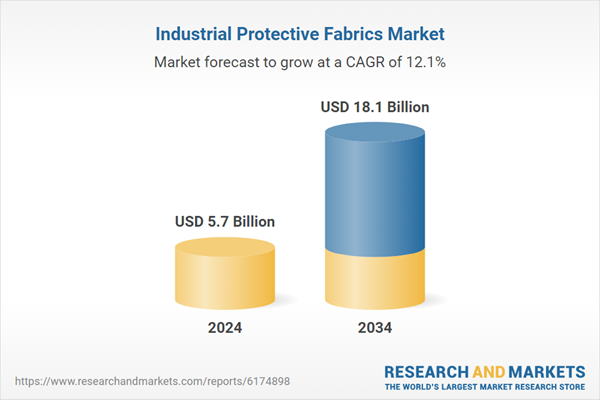Demand for these specialized fabrics continues to rise as industries place greater emphasis on workplace safety and regulatory compliance. Designed to shield workers from hazards such as fire, heat, chemicals, electrical arcs, and mechanical wear, protective fabrics are increasingly adopted across oil and gas, construction, mining, and utility sectors. Governments and international agencies have imposed strict occupational safety guidelines, compelling companies to invest in advanced protective solutions. At the same time, growing awareness of employee safety, combined with the need for durable and sustainable materials, is shaping industry demand. Many companies are adopting eco-friendly approaches to protective textile manufacturing while ensuring that these fabrics maintain resilience under extreme conditions. Investments in innovation, combined with a focus on long-lasting, high-performance products, are transforming protective fabrics from basic safety gear to technologically advanced, sustainable solutions integrated into modern workplace practices.
The aramid segment reached USD 3.2 billion in 2024 and is anticipated to grow at a CAGR of 13.2% through 2034. The strong adoption of aramid fibers is driven by their superior strength, flame resistance, and ability to withstand extreme conditions, making them a preferred choice for industries dealing with high fire and electrical risks.
The firemen suits segment held 42.4% share in 2024, supported by rising demand for flame- and heat-resistant clothing for emergency responders and utility workers. Expanding urban infrastructure and the growing risk of fire-related incidents continue to increase demand. The healthcare and laboratory segment also experienced renewed momentum as protective apparel became essential in medical, pharmaceutical, and diagnostic settings following the pandemic.
U.S. Industrial Protective Fabrics Market held an 86.5% share, generating USD 142.1 billion in 2024 supported by the country’s large industrial sector, strong enforcement of safety standards, and heavy investments in advanced textiles. Smart fabric innovation, particularly sensor-enabled protective materials, has accelerated with support from public-private initiatives, reflecting the nation’s push for advanced safety technologies.
Prominent companies operating in the Global Industrial Protective Fabrics Market include Honeywell International Inc., WL Gore & Associates, Milliken & Company, W. Barnet GmbH & Co, Klopman International, Glen Raven Inc., DuPont De Nemours, Tex Tech Industries, Loyal Textiles Mills Ltd., Beijing BW Protect, Cerex Advanced Fabrics Inc., TenCate Fabrics EU, KOLON Industries, and Teijin Ltd.
To strengthen their position in the Global Industrial Protective Fabrics Market, leading manufacturers are employing multiple strategies. Companies are channeling investments into R&D to develop fabrics with enhanced fire resistance, chemical protection, and mechanical strength while ensuring comfort and durability. Emphasis is being placed on sustainability, with firms introducing eco-friendly and recyclable textile solutions to align with global environmental goals. Expansion into emerging economies through new production facilities and partnerships allows companies to access fast-growing markets and reduce operational costs.
Comprehensive Market Analysis and Forecast
- Industry trends, key growth drivers, challenges, future opportunities, and regulatory landscape
- Competitive landscape with Porter’s Five Forces and PESTEL analysis
- Market size, segmentation, and regional forecasts
- In-depth company profiles, business strategies, financial insights, and SWOT analysis
This product will be delivered within 2-4 business days.
Table of Contents
Companies Mentioned
The key companies profiled in this Industrial Protective Fabrics market report include:- Beijing BW Protect
- Cerex Advanced Fabrics Inc.
- DuPont De Nemours
- Glen Raven Inc
- Honeywell International Inc.
- Klopman International
- KOLON Industries
- Loyal Textiles Mills Ltd.
- Milliken & Company
- Teijin Ltd
- TenCate Fabrics EU
- Tex Tech Industries
- W. Barnet GmbH & Co
- WL Gore & Associates
Table Information
| Report Attribute | Details |
|---|---|
| No. of Pages | 192 |
| Published | September 2025 |
| Forecast Period | 2024 - 2034 |
| Estimated Market Value ( USD | $ 5.7 Billion |
| Forecasted Market Value ( USD | $ 18.1 Billion |
| Compound Annual Growth Rate | 12.1% |
| Regions Covered | Global |
| No. of Companies Mentioned | 15 |









